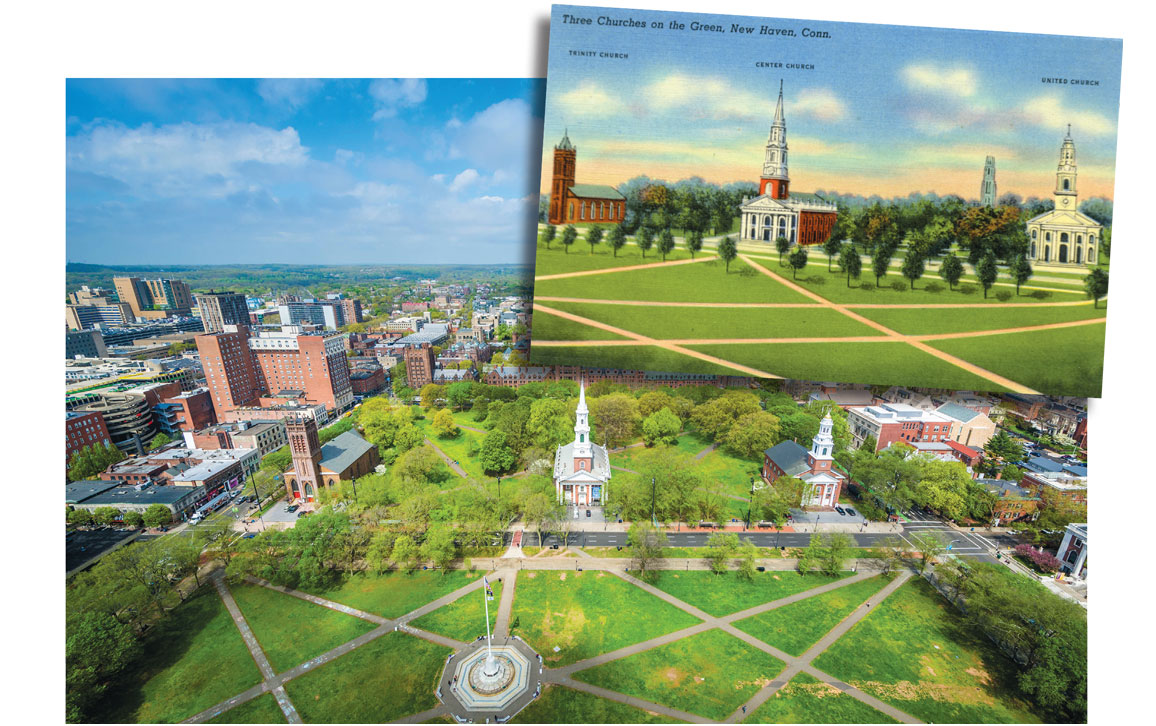The Beauty of Threes
By Henry Petroski
Two famous trios of historic churches and bridges capture the essence of their locations and exemplify the rise of their respective building industries.
Two famous trios of historic churches and bridges capture the essence of their locations and exemplify the rise of their respective building industries.

The planned city of New Haven, Connecticut, was settled by Puritans in 1638. Its geometric layout was organized on a grid of square blocks equal in size, each covering 16 acres (6.5 hectares). Eight of the squares border the ninth one, a central area designated as a marketplace that soon came to be referred to as the Green. The town meetinghouse was located there, and the religious roots of the town’s founding also made the central square the natural location for its houses of worship.

Jon Bilous/Shutterstock
Click "American Scientist" to access home page
American Scientist Comments and Discussion
To discuss our articles or comment on them, please share them and tag American Scientist on social media platforms. Here are links to our profiles on Twitter, Facebook, and LinkedIn.
If we re-share your post, we will moderate comments/discussion following our comments policy.